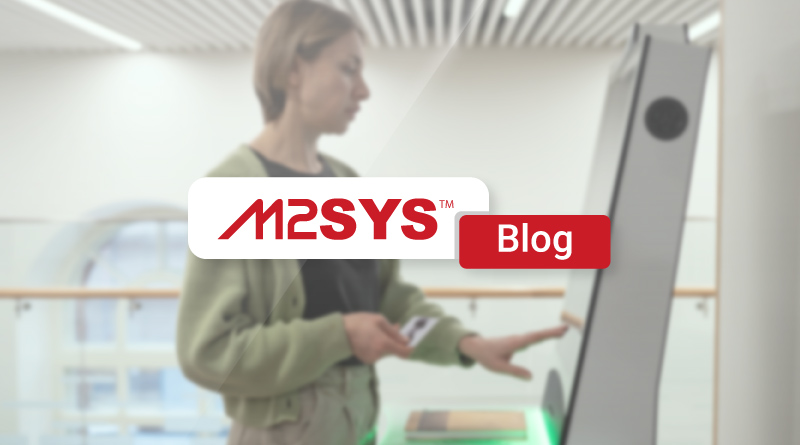Automating Identity Verification to Cut Government Project Delays
Government agencies face significant delays in identity verification projects, often due to outdated systems and manual processes. Automation offers a solution by streamlining workflows and integrating modern biometric tools, reducing errors and deployment times, and enhancing security and efficiency.
Did you know that government agencies lose billions each year due to delays in identity verification projects? A recent study from Deloitte shows that these setbacks can extend timelines by up to 18 months, driving up costs and frustrating citizens who wait longer for essential services.
Government teams often struggle with outdated systems that slow down everything from voter registration to border security checks. Manual processes lead to errors, and integrating new tech with old infrastructure creates endless headaches. For instance, agencies must deal with fragmented databases that do not communicate well, causing repeated data entry and verification failures. This not only wastes time but also increases the risk of fraud and security breaches.
Why Do Delays Happen in Government Identity Verification?
Many delays stem from the clash between modern biometric tools and legacy systems. Agencies rely on these older setups for critical tasks, yet they lack the flexibility to handle new demands. As a result, teams spend weeks or months customizing integrations, which ties up resources and stalls progress. Moreover, vendor lock-in traps agencies into specific hardware or software, making upgrades costly and slow. In fact, a report from Gartner highlights that 70% of government IT projects overrun budgets due to such integration issues.
Streamlining Government Projects can help overcome these challenges by offering solutions that simplify the integration process.
Software vendors and integrators face similar hurdles. They must navigate complex requirements from multiple agencies, each with unique policies and systems. This often leads to hand-coded solutions that take too long to deploy. Consequently, projects drag on, and stakeholders grow impatient as citizen services suffer.
How Can Automation Fix These Integration Challenges?
Automation steps in by unifying disparate systems without extensive coding. It streamlines workflows, reduces manual steps, and ensures data flows smoothly between old and new tech. For example, automated tools can perform real-time matching of biometric data against government databases, significantly reducing error rates. This approach not only speeds up deployment but also allows agencies to adapt quickly to policy changes.
How Biometrics Enhances Productivity illustrates how these technologies can improve efficiency across various sectors.
What Role Does Biometric Integration Play in Reducing Delays?
Biometric integration is essential for secure, efficient identity checks. However, traditional methods often require custom coding for each device, which can create bottlenecks. Automation changes this by enabling compatibility with various hardware through simple configurations. As a result, agencies deploy solutions faster, sometimes in days instead of months. A case in point comes from the Salt Lake County Sheriff’s Office in Utah, where streamlined integrations improved data consistency across inmate management processes, from booking to release.
Across US correctional facilities, similar efforts have enhanced security by verifying identities at key points, reducing fraud and errors. These examples show how proper integration boosts efficiency and compliance in high-stakes environments.
With over 20 years of experience delivering solutions to governments worldwide and in the US, M2SYS eGov has seen these challenges firsthand. Our eGov platform builds and delivers eGovernance solutions that automate identity verification workflows effectively. It uses AI to route cases, process documents, and seamlessly integrate with legacy systems, all without coding expertise.
How Does No-Code Development Speed Up Government Projects?
No-code tools empower teams to create custom applications quickly. Agencies build portals and workflows using drag-and-drop interfaces, bypassing long development cycles. This flexibility eliminates vendor dependencies and accelerates timelines. For instance, the platform automates document handling, extracting data from unstructured forms and routing it automatically. Therefore, staff focus on policy execution rather than tech troubleshooting.
In border security or social program eligibility checks, this means faster verification and fewer backlogs. Agencies report up to 95% reductions in deployment times, freeing budgets for other priorities. Plus, real-time reporting dashboards keep everyone informed, improving transparency and accountability.
What Benefits Come from Automating Identity Workflows?
Automation directly addresses pain points such as manual errors and slow processing. It minimizes fraud through accurate biometric matching and ensures regulatory compliance. As demand for digital services grows, agencies must keep pace, and automated systems enable them to do so. Citizens benefit from quicker access to services, boosting satisfaction levels.
For software vendors, this means easier collaborations with agencies, as integrations happen without custom work. Integrators find projects complete faster, leading to more satisfied clients. Overall, automation transforms how governments handle identity verification, turning delays into efficient operations.
Government leaders now prioritize these tools to meet tight budgets and rising expectations. By addressing integration issues head-on, agencies position themselves for success in a digital world. If these challenges sound familiar, exploring platforms like M2SYS eGov could provide the answers you need to move forward.
What are the main reasons for delays in government identity verification?
Delays in government identity verification often arise from the clash between modern technologies and outdated legacy systems. These older systems lack the flexibility necessary to integrate with new tools, causing long integration periods and increased resource allocation. For a deeper dive into this topic, read our overview on Streamlining Government Projects.
How does automation solve integration challenges in government verification systems?
Automation is a key solution for overcoming integration issues in government verification processes. By streamlining workflows and reducing manual steps, it allows data to flow more efficiently between legacy and modern systems. This not only speeds up deployment but reduces costs associated with manual errors. Explore how Biometrics Enhances Productivity through automation.
What role does biometric technology play in reducing government project delays?
Biometric technology is crucial for enhancing the speed and security of identity verifications in government operations. It facilitates seamless integration with existing infrastructure through automated systems, ensuring quicker deployments. To understand more, consider the insights shared in our article on Software for eGovernment.
What advantages does the M2SYS eGov Platform provide to public agencies?
The M2SYS eGov Platform offers AI-powered automation for case management, significantly cutting processing times and minimizing errors. Its zero-code development empowers agencies to rapidly deploy custom applications, enhancing agility and responsiveness. Discover the full benefits by exploring the features at M2SYS eGov.









